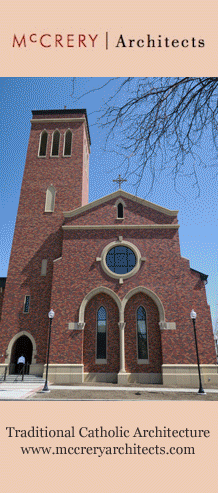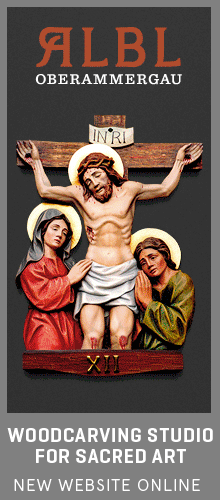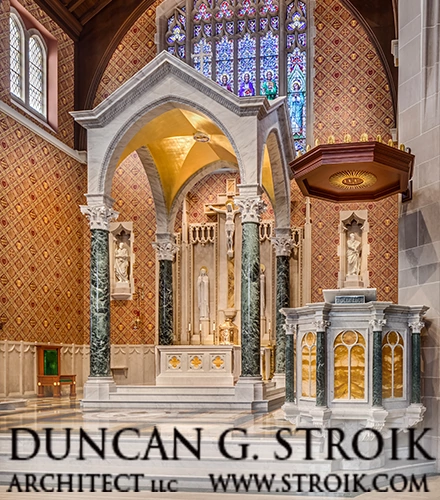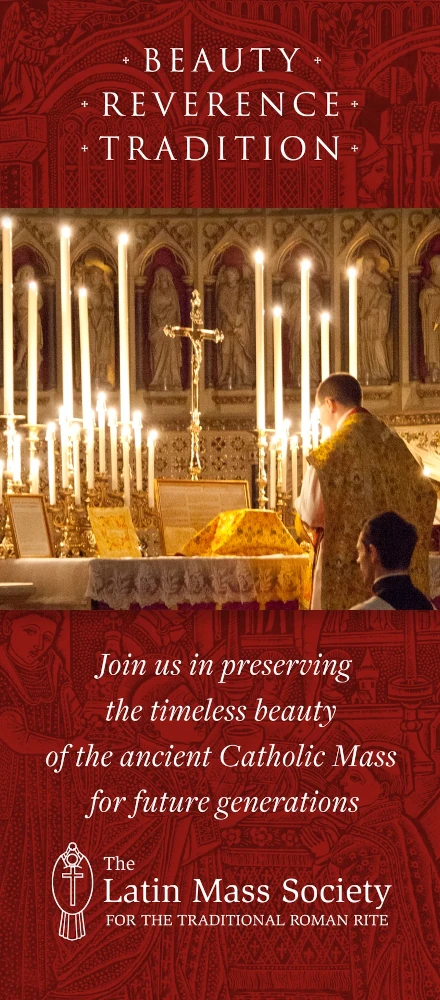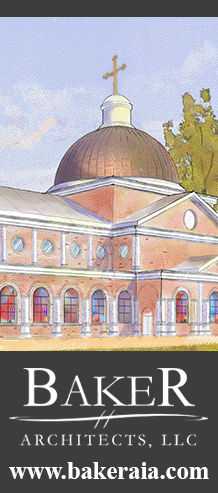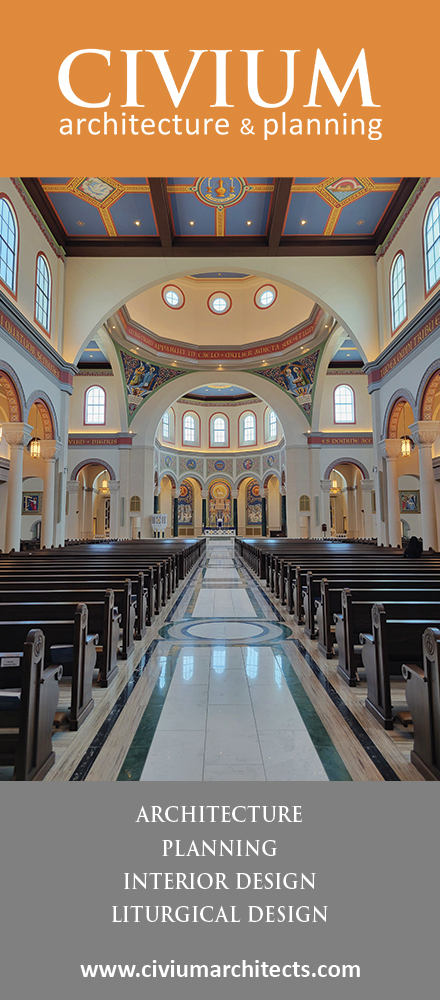Thanks once again to our friend Mr Sean Pilcher, this time for sharing with us this account of the relics of a Saint from the Roman catacombs, which were brought to the cathedral of Dubuque, Iowa, in the 19th century. Mr Pilcher is the director of Sacra: Relics of the Saints (sacrarelics.org), an apostolate that promotes education about relics, and works to repair, research, and document relics for religious houses and dioceses. Sacra recently did an inventory and cleaning of the relics as part of the cathedral’s recently completed renovation.
In 1837 Pope Gregory XVI named Msgr Pierre-Jean-Mathias Loras (1792 – 1858), originally born in France, first bishop of the diocese of Dubuque. This territory was of considerable size, ranging over present-day Iowa, Minnesota, part of Wisconsin, and the Dakotas. Bishop Loras’ father, Jean-Mathias Loras, had been guillotined during the French Revolution for harboring priests. Two of his aunts and one uncle were also be put to death for sheltering priests in their home. Loras had a strong sense of his identity as a Catholic, and a knowledge that he would have to sacrifice much to spread the Faith. Once he was consecrated bishop, he set about learning all he could of his new diocese. There were three Catholic parishes, an Indian mission, and one priest.
 |
| Roman Boy Martyr, Oxford Oratory. Photo courtesy of the Rev’d James Bradley, J.C.D. |
In an audience with the Holy Father, Bishop Loras received relics for his new mission. These relics, usually remains of martyrs from Rome’s catacombs, were meant to bridge the gap between the Old World and the New World, as well as establish spiritual ties between mission territory and already-Christianised Europe. As holy relics of a saint, they would also form a spiritual bond between Catholics striving for holiness on earth, and those who had already won the crown in heaven.
 |
| Msgr Mathias Loras |
Relics would be used in consecrating new altars as churches were established, and could serve as a focal point for local liturgical life and popular devotion to the saints. The New World could not yet boast many saints—it was Bishop Loras’s job to change that—but in the meantime, Rome could spare a few.
 |
| The reliquary box brought by Bishop Loras from Rome. All photos of relics and reliquary courtesy of Katzie & Ben. Photography. |
At his audience with the Pope, Bishop Loras received a marbled wooden box containing relics of a Roman boy martyr called Cessianus from the catacombs. The Saint, whose name is a nomen proprium, and not a generic name affixed to remains, was removed from the catacombs of St Callistus and granted as a sign of unity, encouragement, and commission to Bishop Loras. He brought the marbled wooden box with the bones, a glass ‘vessel of dried blood’ (which we shall return to later), and possibly a marble gravestone, on a boat with him to America, and it was on this dangerous journey that Loras’ particular devotion to the Saint began.
 |
| Eugène Louis Boudin, Le Havre, Brooklyn Museum |
It was time to make the long journey across the sea. As Bishop Loras and his companions left Le Havre, France, on 27 August, 1838, they brought the box of the relics of the Saint, whom he endearingly called Saint Cessien–early English-language sources call him St Cessian. The journey was of course taken by boat, and subject to considerable danger. Bishop Loras credited his safe arrival in New York on 10 October to the intercession of his boy saint; he was even able to offer Mass with the relics several times while at sea, a great source of consolation to all present. He did not arrive until April of 1839; from New York he first went to St Louis, and then traveled with the relics up the Mississippi to his new diocese, arriving two full years after his appointment by the Pope. When he made his solemn entrance into his cathedral in the American wilderness, St Cessian was there. Here was a true meeting of Romanità and the pioneering spirit of the New World.
After settling into his new diocese, Bishop Loras wrote to the Sacred Congregation of Rites in Rome asking for St Cessian to have a special feast in his diocese, with its own Mass and Office, on 25 October:
‘Je vous prierai si ce n’est pas trop tard, de faire insérer dans l’ordo pour le diocèse de Dubuque au 25 octobre, festum Sancti Cessiani, Martyris, Duplex cum suo officio de praecepto.’ (I should ask you, if it is not too late, to kindly add into the ordo for the Diocess of Dubuque, a feast of St Cessian, martyr, on 25 October, a duplex feast with an obligatory office.)
Catacomb martyrs are saints, but it was not always a given that they would be liturgically commemorated. This letter shows the importance St Cessian’s feast had for Bishop Loras, and the initiative he personally took to establish devotion for him in his diocese.
 |
| His Excellency Mathias Loras, First Bishop of Dubuque |
The feast of St Cessian (25 October) comes the day after the titular feast of the cathedral and diocese’s principle patron, St Raphael the Archangel, whose traditional feast is 24 October. The date has a connection to the Saint’s grave marker from the catacombs. Although the marker has not yet been rediscovered, the inscription on it was carefully recorded on the relic’s documentation. It may have been irrevocably lost, or may still lie in an archive somewhere.
 |
| The inscription from the grave marker, as recorded on the document given to Bishop Loras. |
The inscription reads ⳨ ΘΚΑΛΑ—ΝΟΒ—ΚΑΤ. ΚΕϹϹΙΑΝΟϹ. The first character is a staurogram or chi-rho symbol, a mark of the Christian Faith. Then follows ‘nine days (the Greek letter nine is written as the letter theta) before the kalends of November, Cessianus was buried.’ The date is October 24, the same day as St Raphael, so Bishop Loras chose the following day for his feast. Since St Cessian would be the patron of the whole territory, celebrations of the two saints could be easily linked. If and when the original marker is found, its inscription can be compared to this record to ensure a match.
 |
| Another, unrelated Christian gravemarker, for reference. |
The list of the reliquary box’s contents also mentions a vas sanguinis, or ‘vessel of blood,’ which scholars think is more likely the remaining pieces of a vessel of perfumed oil buried as a symbol of respect for the body. The vessel is a semi-translucent concave portion of a Roman vessel embedded in a piece of stone.
 |
| The ‘vas sanguinis’ with its labeled wrapping. |
As information and interest about St Cessian spread, popular devotion, and even curiosity among non-Catholics grew. St Cessian’s relics were listed as a destination for pilgrimage and included in guidebooks of the state. October 25 was observed by the people and clergy of the now archdiocese with great festivity. Interest in the Saint, however, was not confined to the See of Dubuque; even as its boundaries shrank when new dioceses, like that of St Paul, were erected out of its territory, St Cessian continued to receive attention throughout the Mid-West. Because of his connection to the first days of the Faith in region, St Cessian became known as the patron of Iowa and Minnesota, though the original territory of his patronage is much larger.
 |
| An excerpt from Iowa: A Guide to the Hawkeye State (1938), p. 253 |
Despite the importance of the relic, it seems there was not originally sufficient space and resources to honour it. It was first kept in a corner of the first cathedral. Fr Cretin, now vicar general of the diocese, received a letter from Bishop Loras, asking him, if possible, to bring more relics back with him from Europe, and lamenting the little honour they could afford their saint, hoping to provide a more suitable place for him in the new cathedral they were raising funds for. Sadly, Bishop Loras would not live to see the new cathedral completed; he died in 1858.
 |
| Fr Raymond Hermon looks at the grave of Bishop Loras in the cathedral’s crypt. Photo TH Archives. |
The relics were installed near the stairs to the crypt of the new cathedral, and Masses were offered there before the new cathedral building was consecrated. The relic continued to hold a place of importance, while global attention from two world wars also shifted devotion to more universally popular saints through mass-printed prayer books and leaflets. The Iowan Saint was lacking a marketing department.
 |
| The new cathedral, completed in 1870 |
When changes were made to St Raphael Cathedral after the Second Vatican Council, the box of relics was placed in a carved wooden reliquary and enshrined under the new, free-standing altar. One could have hoped that this new, more prominent position of the relics would continue, and even nurture devotion to the local saint of the Archdiocese. Sadly, however, catechesis waned on the whole, relics were downplayed, and the cultus and liturgical commemoration of Iowa’s patron dwindled. By the time of the liturgical reform the Saint had fallen almost into obscurity, though his relics still lay at central point of worship in the local church.
 |
| The sanctuary of St Raphael Cathedral in 2018, before the most recent renovation. The reliquary box under the main altar reads Corpus Sancti Cessiani Martyris. |
Varying accounts of the box’s contents had been recorded since the nineteenth century. Some authors maintained that the martyr’s grave marker and body were inside the reliquary box, others thought only a few bones, while one maintained only a skull. No photographs existed of the contents, and no one alive had ever seen them.
Sacra’s team recently conducted a study and restoration, analysing the contents of the reliquary and comparing them to the items listed on the documents Bishop Loras brought from Rome.
 |
| The skull and some of the bones of St Cessian, Martyr. |
Inside the box was most of the skeleton of the Roman boy martyr Cessianus. Next to it was the so-called vas sanguinis, ‘vessel of blood,’ from the catacombs—more probably a vessel of perfume for burial—listed on the document, but the grave marker of the saint is still missing. While the identity of the relics is certain, given that the reliquary was sealed, it is quite possible that the stone marker, kept outside the box was retained in Rome or was carried on the journey alongside the box.
The cathedral underwent significant renovations to address structural and aesthetic concerns, culminating in its reopening in early 2025. During renovations, Sacra assisted to clean, inventory, professionally photograph, and author a report on the status of the relics. The relics were returned to the cathedral as part of its reopening for worship.
The recovery and restoration of the relics of St Cessian is an immense first step in restoring the cultus or veneration of this important saint. He holds a unique place in the history of the Catholic Church in the Mid-West, and his patronage can extend to that entire area. His life connects us to the Faith of the early Church, to the Apostles, and the witness of his boyhood martyrdom highlights the ordinary heroism to which the laity are called.
An important next phase in restoring devotion to this wonderful boy saint is commissioning an image (people need a face to look at) and spreading devotion through holy cards, novenas, etc. Since Cessian is already a saint, no approval is needed, just willing souls, some material resources, and lots of people praying to a new-found friend in heaven!
It only makes sense that the saint that Providence and the Holy See assigned to this territory at its inception would be specially linked to the faithful in those places. He is our special saint and we would do well to appreciate him. In all this time, he certainly has not forgotten us.















